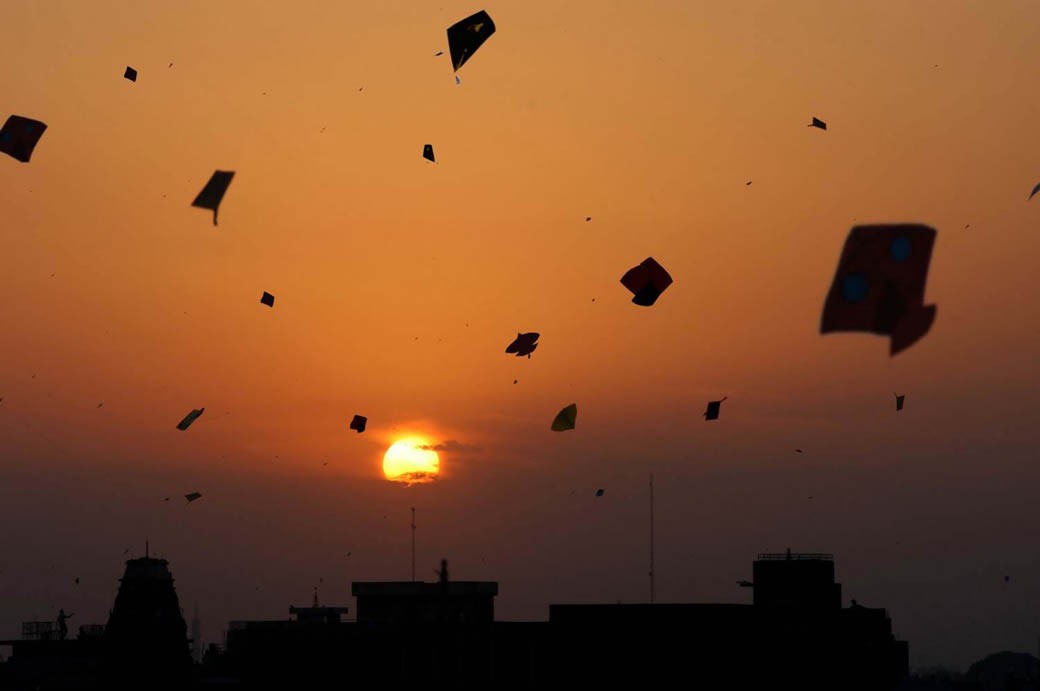
The basant they want restored is not the poor person’s festival; it is artificial at best

The worst fears have been realised. The government has back-tracked from its earlier announcement that basant will be restored this year. From what, I ask. Because the ban on kite-flying appears to be working solely for Lahore.
A few weeks back, I had this chance to go to Muridke with family to visit a friend which required us to opt for the GT Road instead of the default M2. It was a usual hazy December afternoon. As soon as we were out of the bounds of Lahore, as near as Shahdara, the sky became dotted with small kites. Nothing fancy. Nothing really colourful. Just ordinary regular kites.
From the confines of the car, it was hard to spot the boys on rooftops flying those kites.
One has seen and heard in the last many years how kite-flying continues in other towns in Punjab. Gujranwala, Kasur, Sialkot, Faisalabad. Some are known to even have their share of basant.
Lahore on the other hand is cursed. Perhaps, because that is where the media is. And the media’s job is to report, preferably, tragedy. True to its description -- mass medium -- it also considers it its job to bring the ordinary people’s voices to the masses. "How can we allow this bloody sport to continue playing havoc with people’s lives," men and women on the streets were blurting out on microphones before TV cameras weeks after the restoration announcement. Urdu papers were reporting "innocent lives at risk" due to the "khooni khel" in one or the other mohallahs of Lahore.
No government wants bad press; because bad press can get really bad. That is what had brought this ban about in the first place.
People were really hopeful this time. At another friend’s place last week, revival of basant was under discussion. "There is no better chance for the PTI government to regain its popularity among the ‘Nooni’ Lahoris," one friend pointed out. "They will deal with the media and get us our four days of kite-flying," another one said. "It will be done because the faujis want the basant back," yet another one quipped. Even this?
It wasn’t meant to be. But my question is different: why do people only want basant and not kite-flying back? Isn’t the former a culmination of a season of flying kites? The value of tradition lies as much in one as the other.
My friends said the demand must begin with basant and gradually lead to asking for more -- a whole season of kite-flying. I don’t agree. The basant they want restored is not the poor person’s festival. It is the corporatised festival that involves money and caters to the elite. It is the basant that seeks to promote tourism, to send a better image of Pakistan across. It is artificial at best.
The apparent concern in all talk about kite-flying is safety. Today, if you get on the rooftop, any rooftop, in Lahore and start flying a kite, chances are that within ten minutes the law enforcers will land at your doorstep and charge you. This is policing at its best in a city the size of Lahore.
A government that had achieved this kept telling us it could not control the size of guddis and patangs and the quality of lethal dor (twine) manufactured in this very city. A traffic police that could make all car drivers wear seat belts and all motorcyclists helmets in a couple of weeks has been saying it can’t ask the bikers to put an arched rod in front of their vehicle.
It is that time of the year again. There is an entire generation born after the ban on kite-flying that doesn’t know what the sport meant for the city and its residents. There’s a new government in place that claims it needs four to six months to hold a safe ‘basant’. The focus is wrong, and misplaced. It must do whatever it takes to bring the kite-flying back. Basant will inevitably follow.